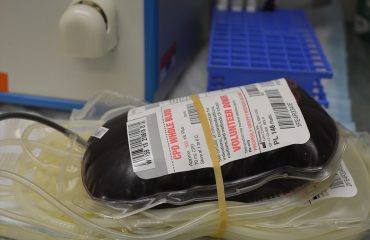Cancer– the devastating enigma that continues to kill us– has thrown the public for a new loop. Johns Hopkins researchers now report that despite healthy lifestyles, cancer can still gain a foothold in our lives due to spontaneous mutations in our DNA. In fact, they tell us in their latest study that “more than two-thirds (nearly 66%) of cancer-causing mutations are the result of random mistakes in DNA replication that occur when normal cells divide.”
Even more startling, a small percentage (only 5%) of cancer causing-mutations are linked to inherited genetic risk, while 29% can be attributed to modifiable lifestyle factors such as not wearing sunscreen or heavy smoking. Investigators are currently analyzing models using DNA sequencing data from the Cancer Genome Atlas and disease data from the Cancer Research UK database to determine which mutations drive abnormal cell growth in 32 different cancers. The study’s senior author, geneticist Dr. Bert Vogelstein believes that despite the implications of the study, the majority of cancers may still be preventable. It takes at least four mutations before cells become malignant. Next steps are to understand what causes these errors in the DNA sequence that lead to cancer and then, how to prevent them from occurring.
Read more about it here.
Take Heart— There’s a New Medication to Combat Coronary Disease!
Eleven million Americans are at risk for heart attack or stroke because of genetic predispositions to high LDL cholesterol levels. Until now, the only class of medication that can lower LDL is the statin, which may have intolerable side effects, especially in women, and in other patients and may simply not be effective. Now, there’s a new drug on the market, Repatha (also known as evolocumab) manufactured by Amgen, that significantly reduces LDL levels in at risk patients over an extended period of time—with minimal side effects noted such as redness or itching due to injections.
A clinical trial patient, already taking statins to keep her LDL level of 200 in check was alarmed when inexplicably, her LDL level jumped to 450. After two months of taking Repatha with her statin, her level dropped to an astonishing 50. Another drug on the horizon that also shows promise is Inclisirin, manufactured by the Medicines Company. This drug can be injected once every six months, twice yearly while Repatha must be administered atleast 24 times a year. Consequently, costs for Repatha will average close to $15,000 a year while Inclisirin is expected to be cheaper. Nonetheless, whether or not insurance companies will pay for Repatha until cheaper drugs come on the market remains to be seen.
Read about Repatha and Inclisirin in the New England Journal of Medicine.
Dr. Legato Quoted in a National Geographic Article
EVATAR Heralds a New Paradigm in Drug Investigation for Women
A state-of-the-art device named the EVATAR may just hold the key to understanding how medicines affect women differently from men. The name is a portmanteau of the Biblical character, Eve, with the word Avatar—and its designers hope to create a virtual representation of a woman. No bigger than a bento box, EVATAR contains living tissues that comprise ovaries, the uterus, cervix, vagina, fallopian tubes and the liver. It is designed not only to represent a woman’s body but also to replicate its functions. Most recently, it simulated a full menstrual cycle replete with hormones making their way through a miniature reproductive system.
EVATAR also suggests unique medical breakthroughs are in the offing for treating women. “We’re in a new era of investigation,” says Doctor Legato, adding, “fluctuations in estrogen and progesterone throughout women’s menstrual cycles also affect their physiology. And, this preparation in a dish provides us with a new way to test the relationship of medications to the different hormonal milieus women experience.
Scientists eventually hope to connect multiple synthetic systems to create a “human in a dish” and that one day, patients’ tissue samples could be used to tailor, target and adjust treatments for them based on their own avatar devices. People in a petrie—what will they think of next?!
Read more about this astonishing device in the National Geographic article, “World’s First Menstrual Cycle Simulates Female Body.”
Strategic Communications Professional/Content Strategist/Marketing Communications Consultant





